
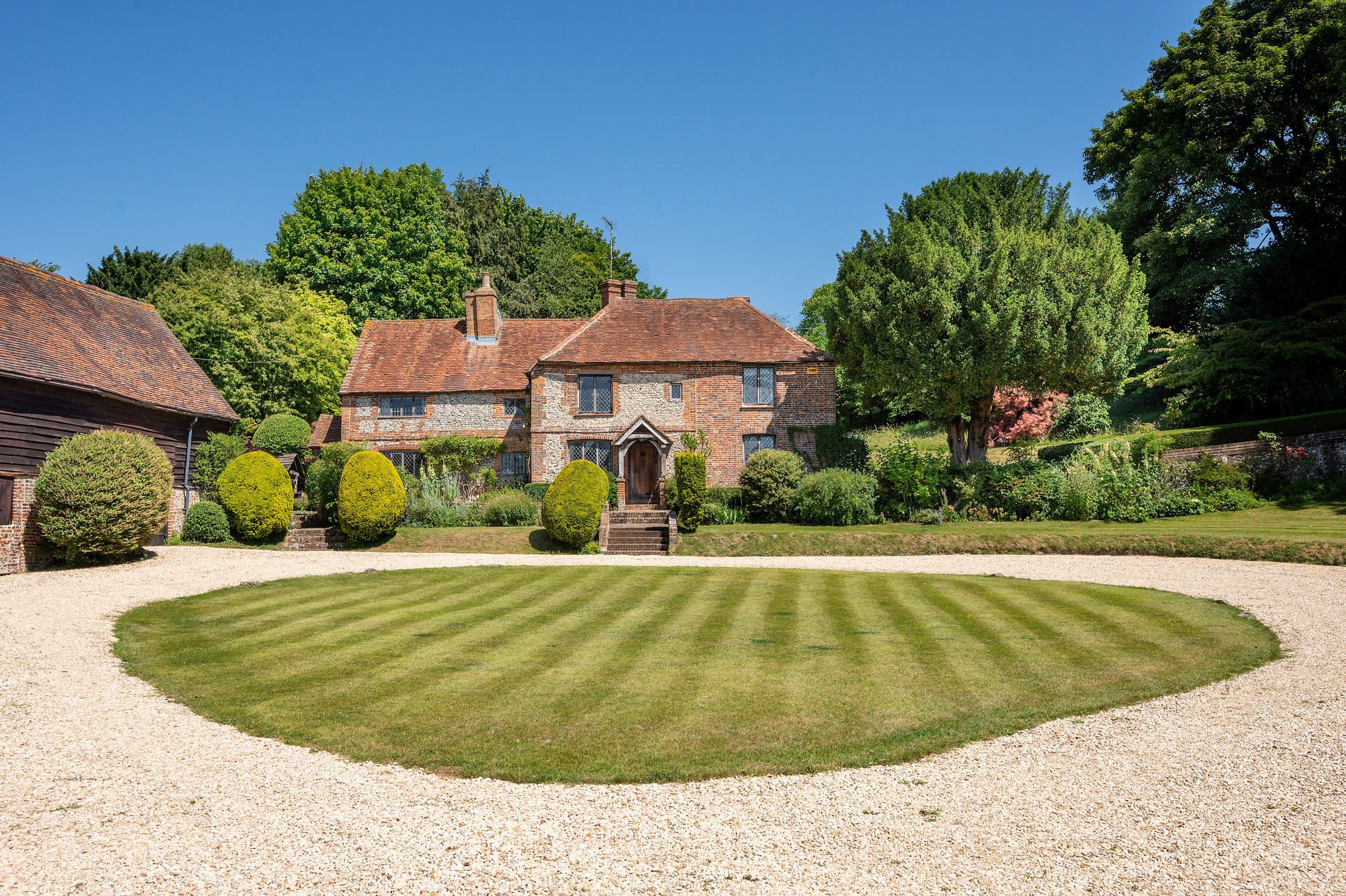
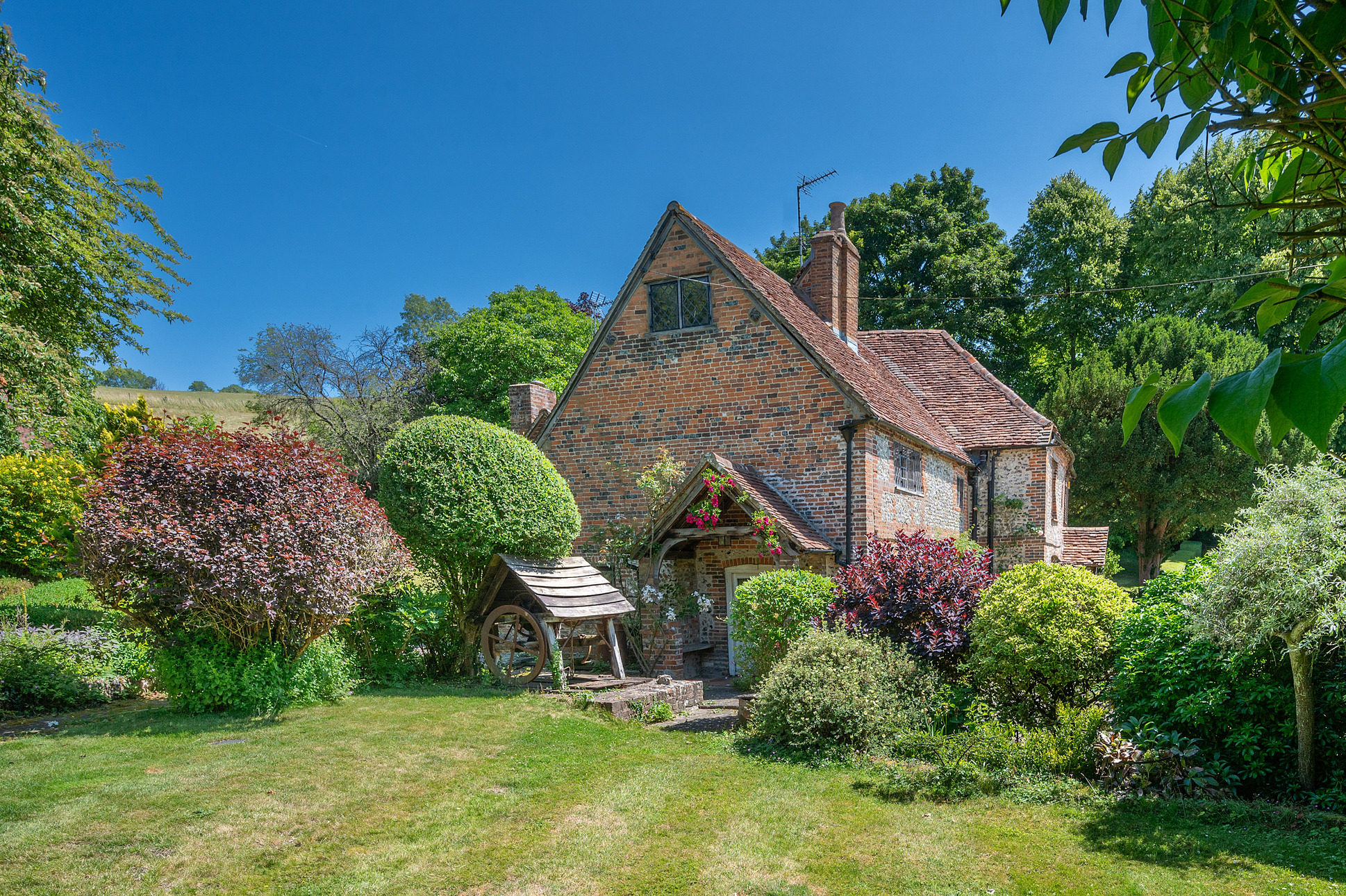
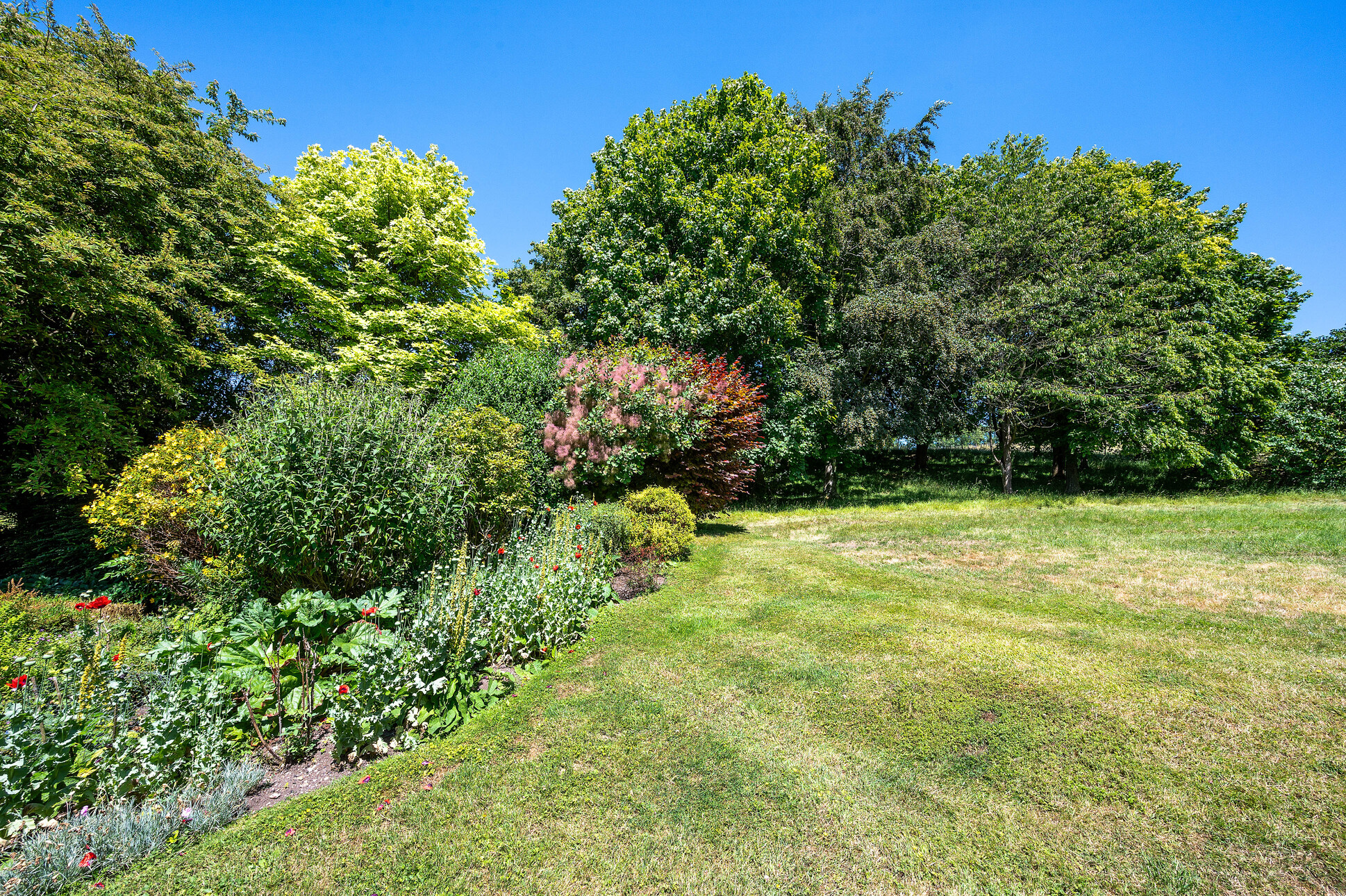

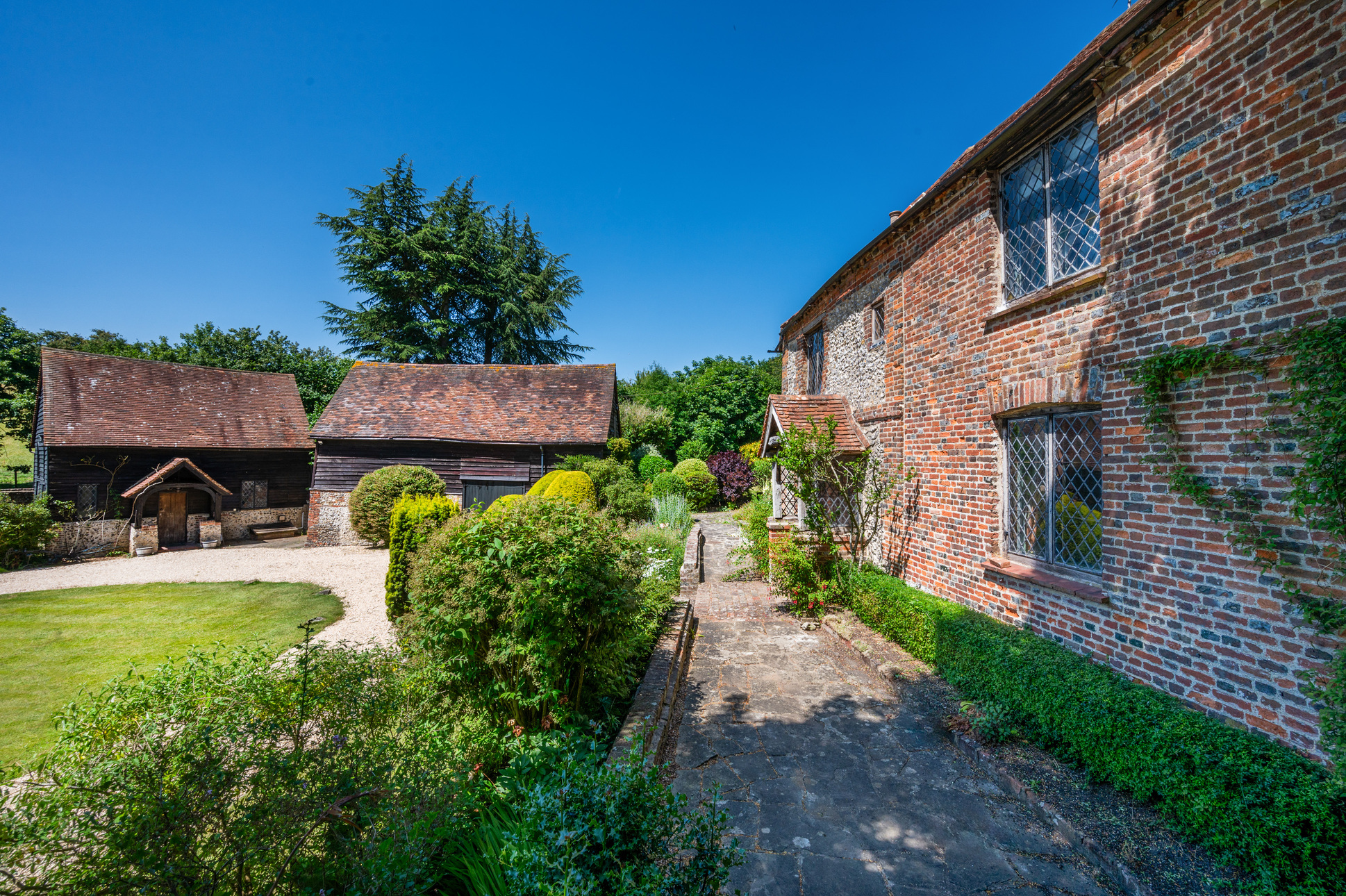
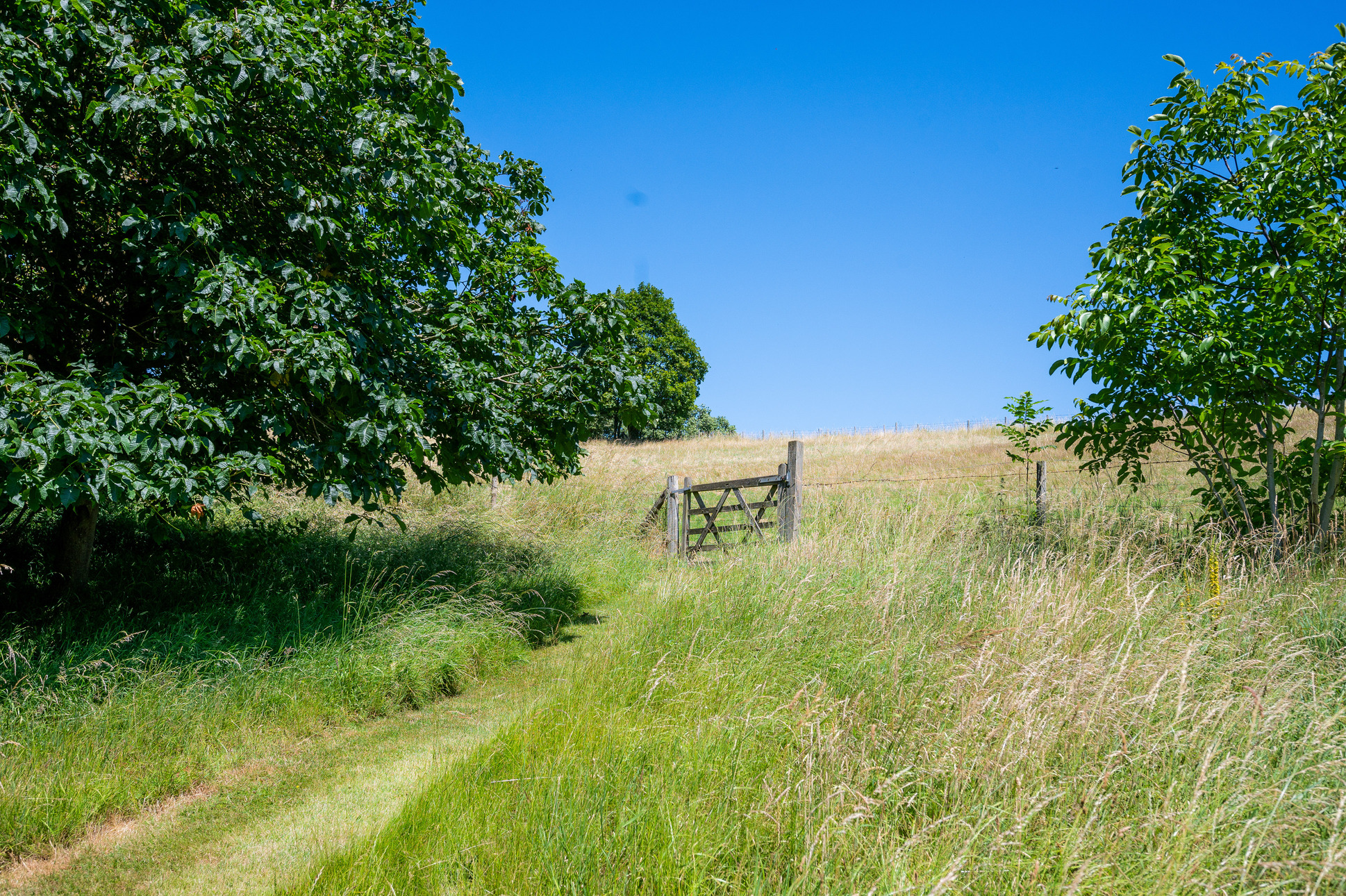
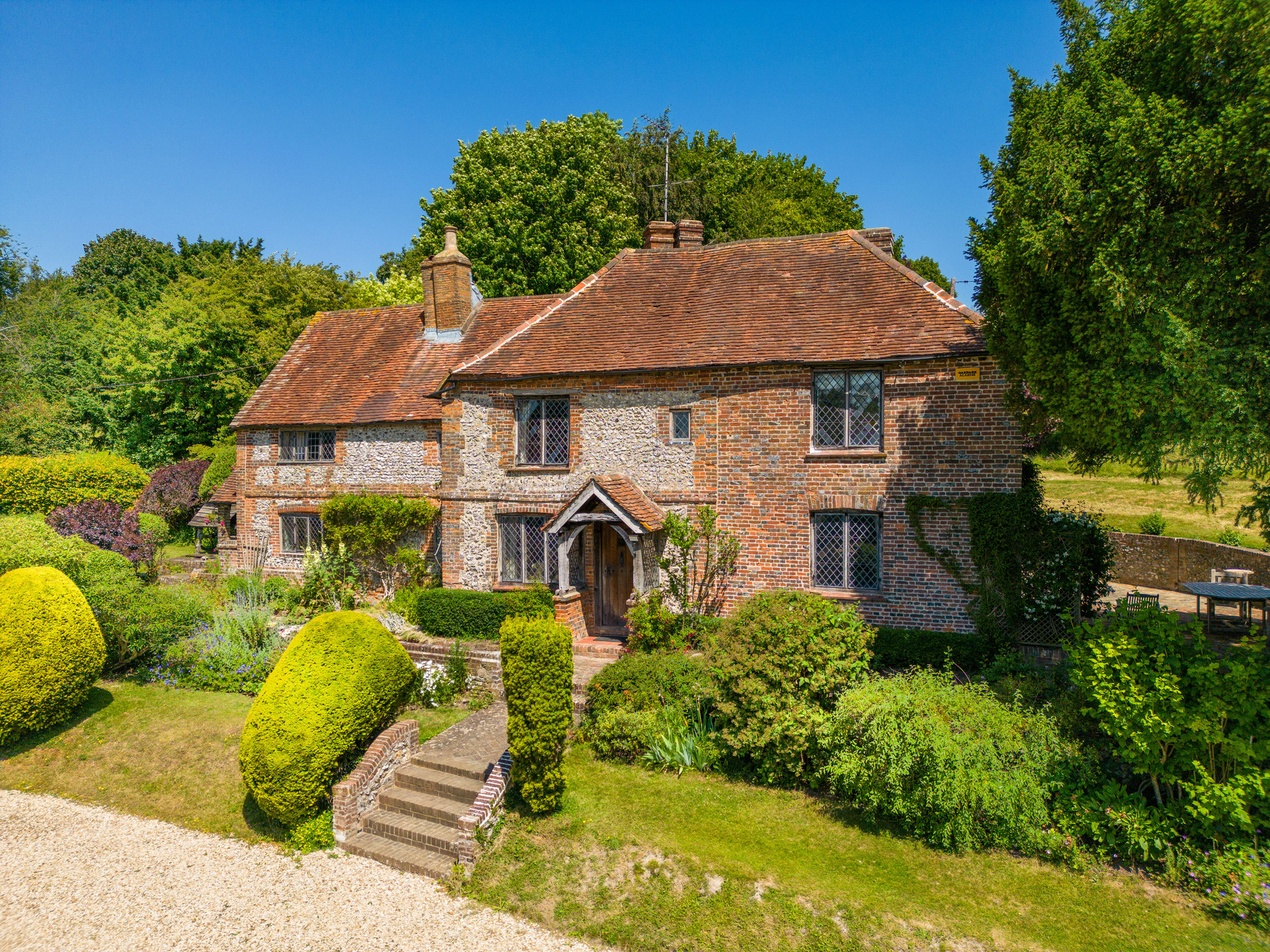
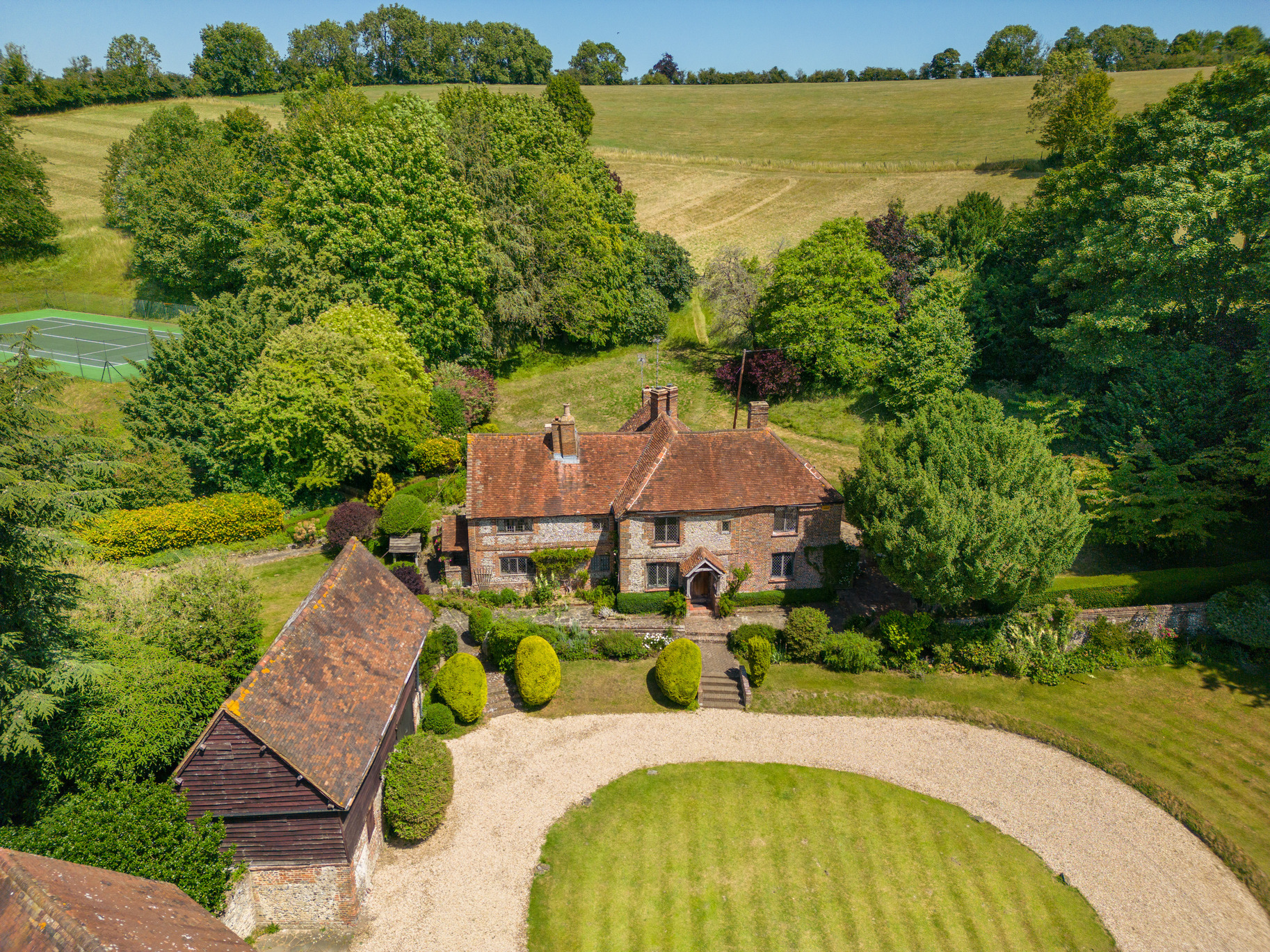
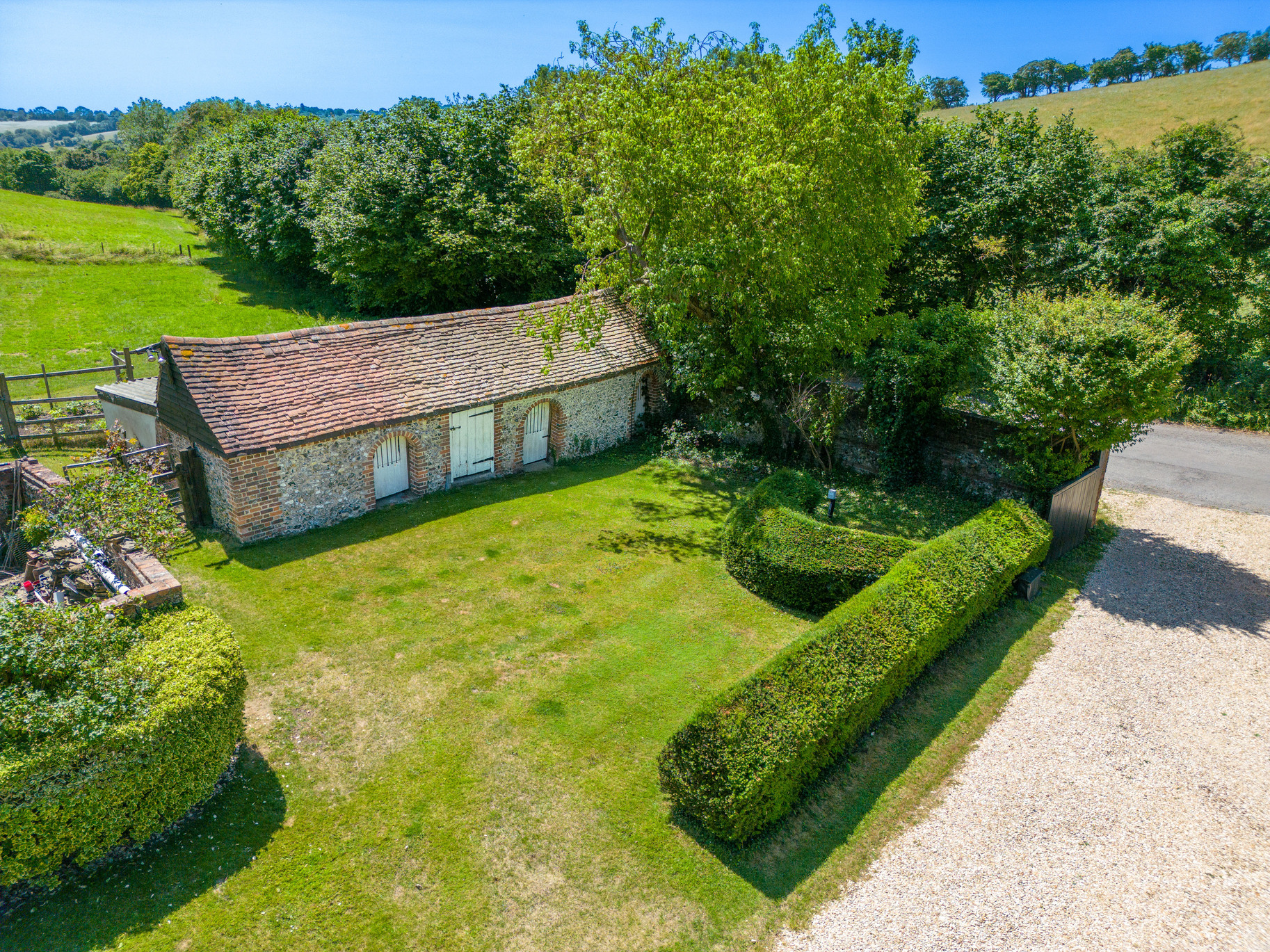
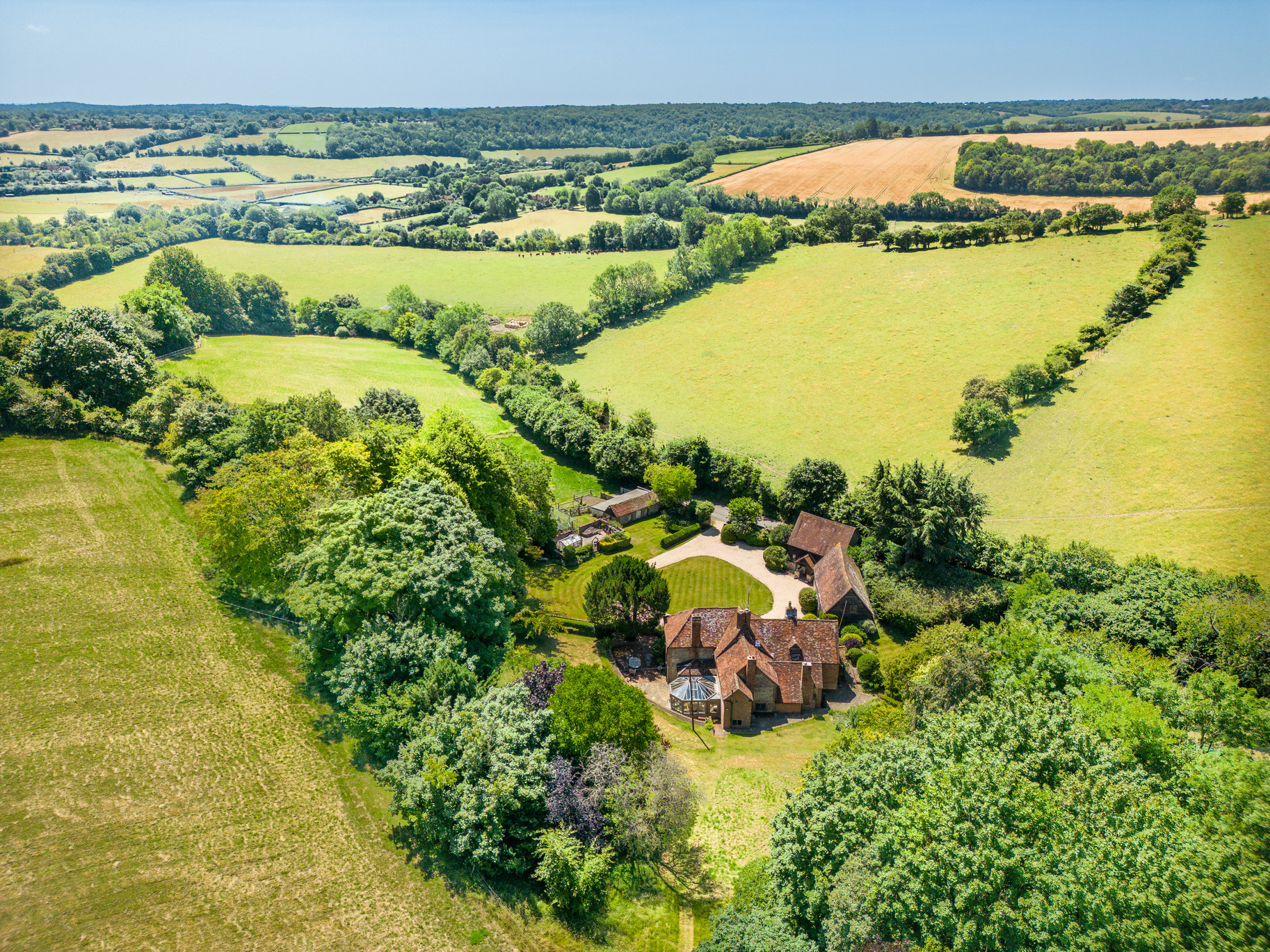



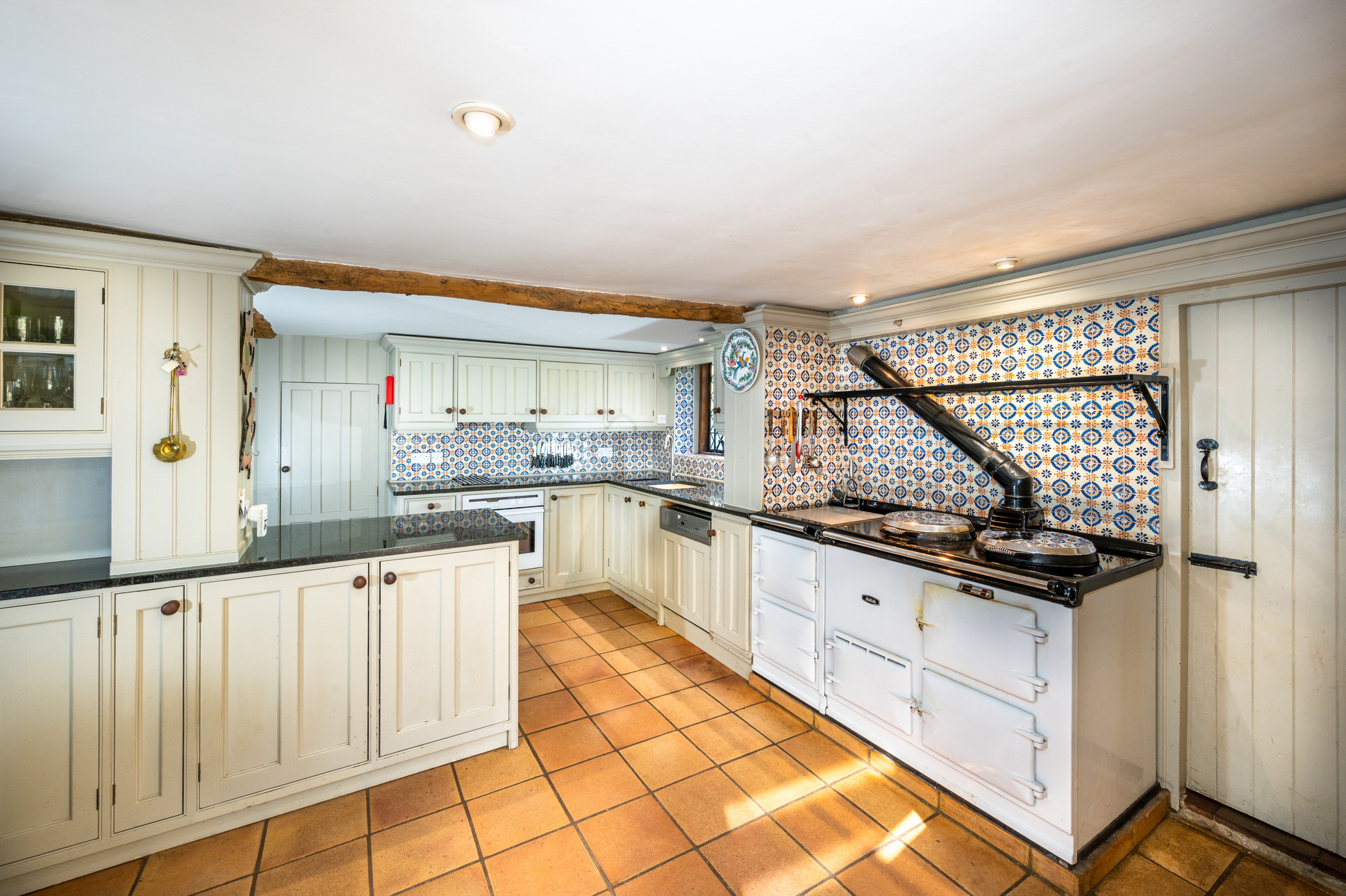
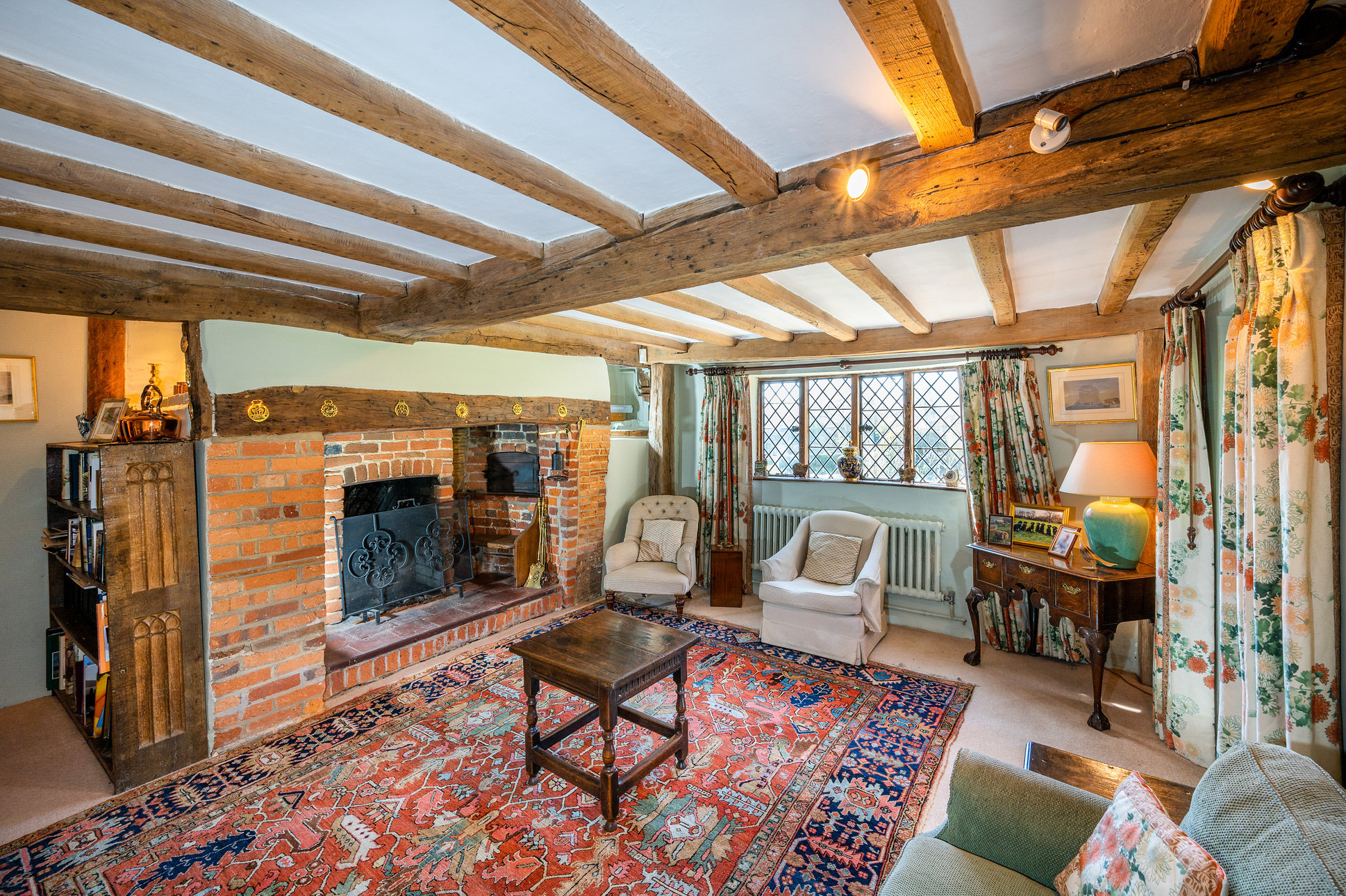
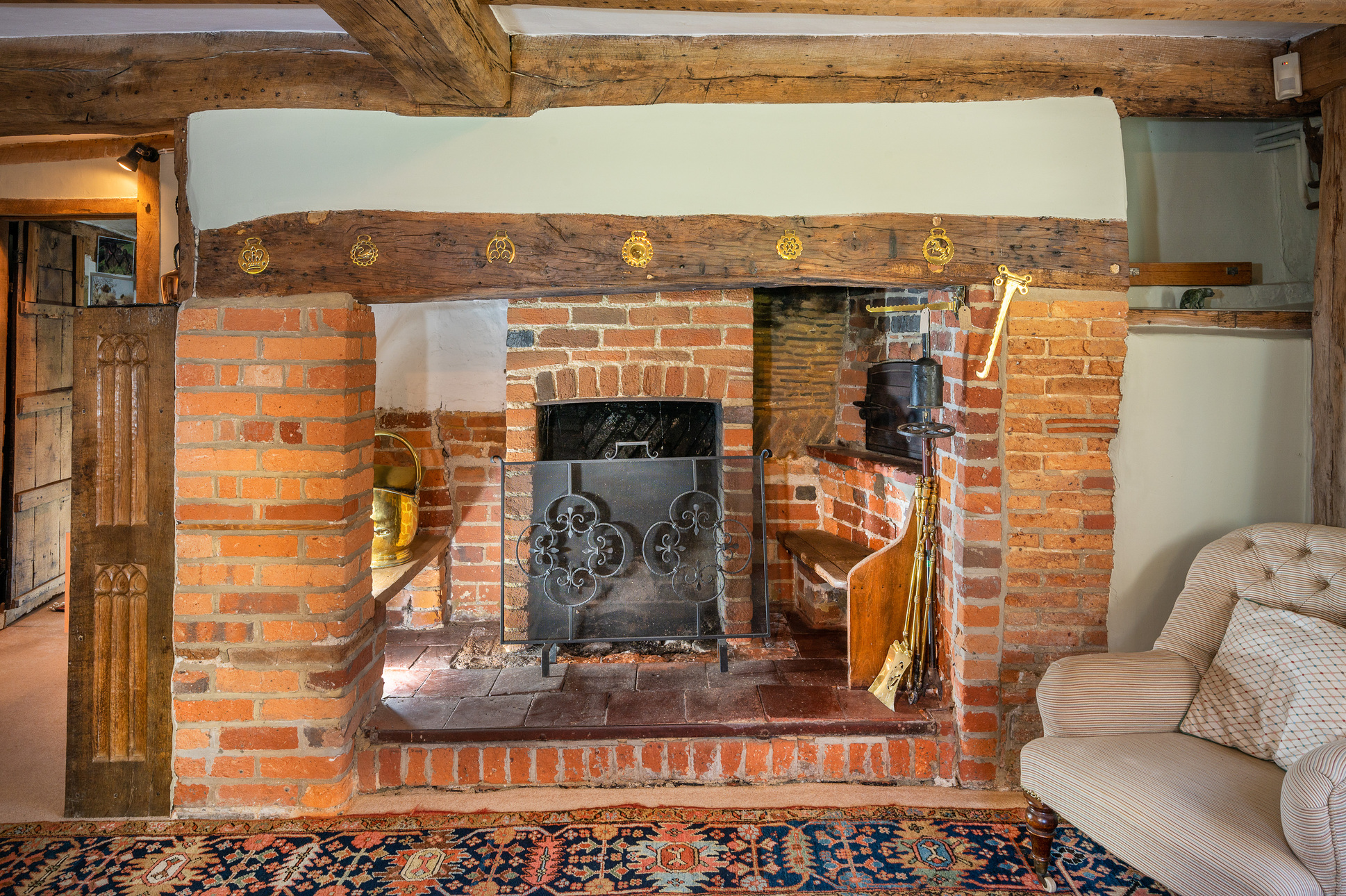

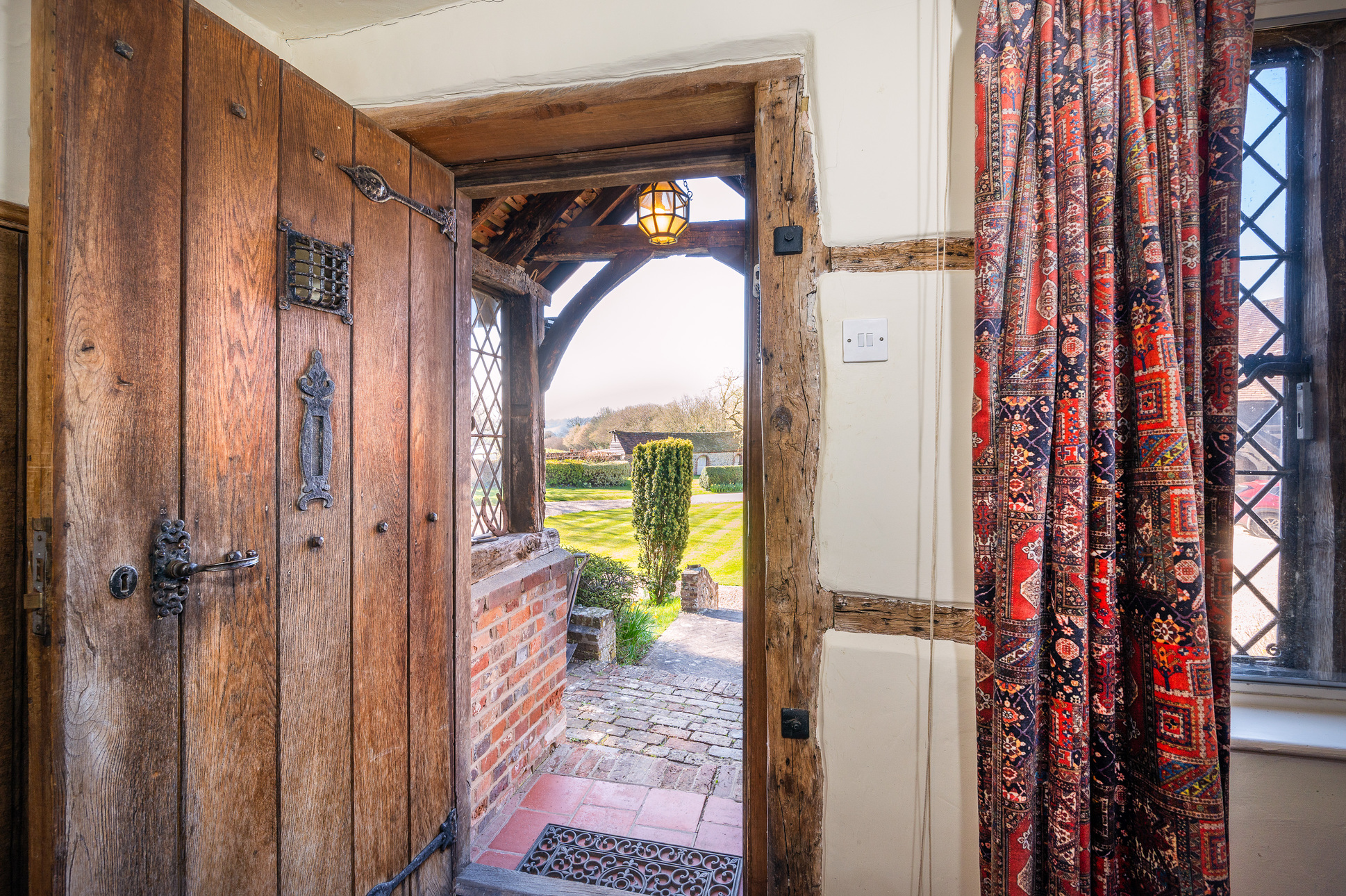
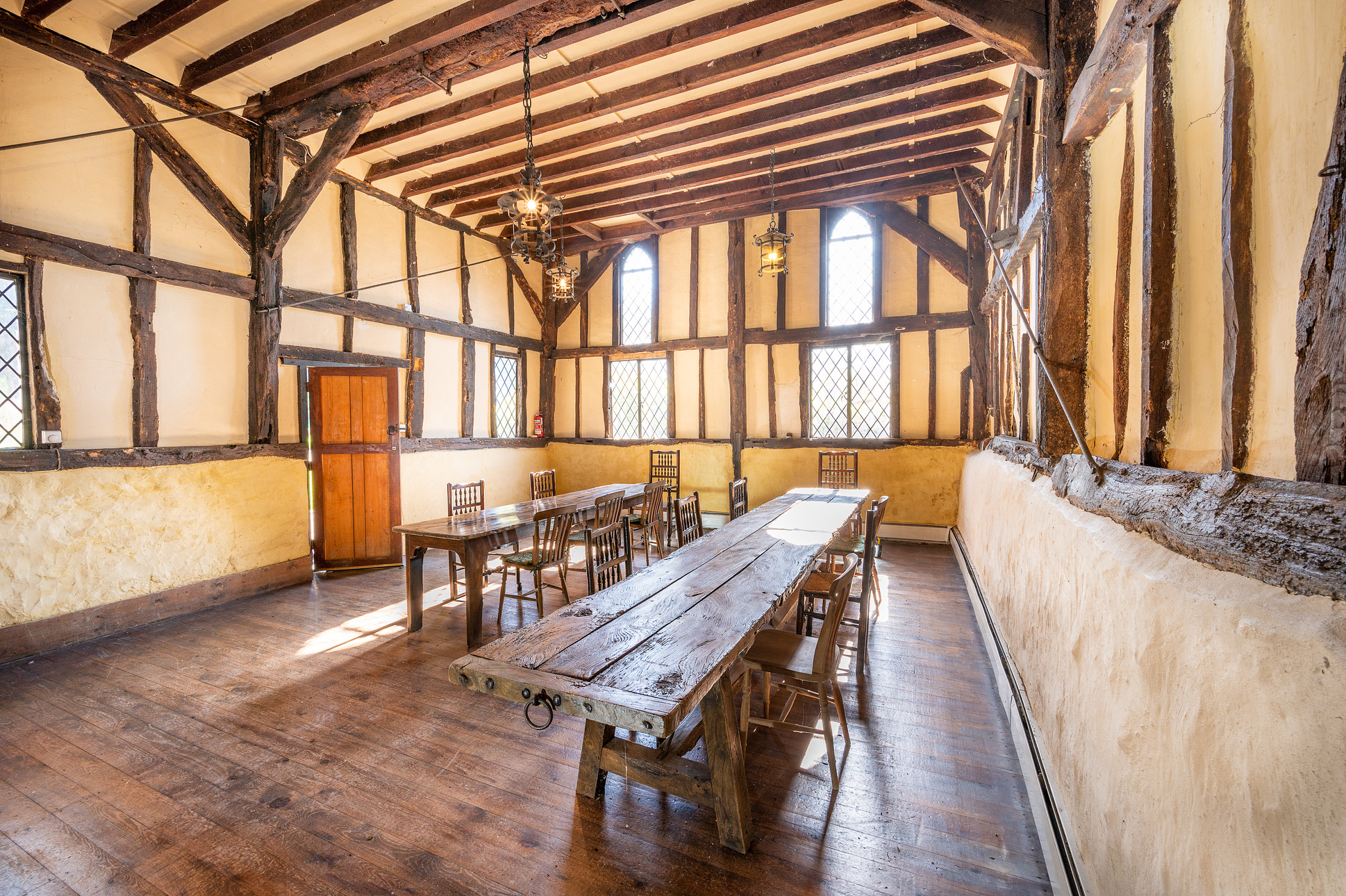






















Romantic Grade II listed former farmhouse nestled in a rolling valley with a southerly aspect and stunning unimpeded views.
For more information please contact Lindsay at Lindsay@bluebookagency.com 07967555545 or Seb at Seb@bluebookagency.com 07535150888
For full details please download our Brochure




Chapter One
Nestled amidst a beautiful rolling valley, this traditional brick and flint farmhouse is a rural idyll for a family home or a weekend escape. It stands in an elevated position with spectacular unimpeded views over its own beautiful grounds and the valley beyond. A testament to its allure is the continuous ownership by a single family for 36 years.
The house has a romantic feel with a magnificent sense of history. Along with numerous period and intriguing features, including exposed timbers and beams, handsome chimney pieces and original doors, this magical property is brimming with character and charm. Taking full advantage of the far-reaching views, the main reception rooms are south facing and are ideal for entertaining.
Stepping through the porch, the front door ushers you into the reception hall with an impressive brick chimney piece and quarry tiled floor. This hall is flanked by a dining room and sitting room; both enjoying dual aspects and doors to the terrace or garden. The sitting room, which is off the inner hall, has a large inglenook fireplace with seats either side and an old bread oven.
The kitchen is to the rear of the house and opens onto a conservatory, which is currently used as a breakfast room. Steps from the kitchen lead to a tucked away study that allows someone to work in private while hearing the toing and throwing of the household. Essential for country living, there is a utility room, boot area and pantry.
There are two staircases to the first floor which has three bedrooms with adjoining bathrooms and a further bedroom currently used as a first floor sitting room. There is an additional second floor bedroom with separate bathroom. There is also access to loft space on the second floor.




Chapter Two
There are a pair of magnificent Grade II listed barns, one is currently used for general storage and the other as a party barn. The former has exposed wooden beams and a mezzanine hay loft. The latter’s dark wooden beams and old crittall windows immediately transports you in time to a Tudor banquet. There is also the attractive brick and flint old kennels currently used as garden sheds, which, subject to planning, could potentially be converted to further bedrooms. Adjacent to the old kennels is a garage.
Approached over a gravel drive with large turning circle to the front of the house, the mature gardens are principally laid to lawn with wide flowerbeds and a hellebore walk. There are herbaceous shrubs and sculptured hedging, as well as numerous deciduous and coniferous trees, including a large yew tree. The house is surrounded by well-fenced grass fields, connected to water.
There is a recently resurfaced tennis court in a raised position with views down the valley.




Chapter Three
The core of the present Radnage Bottom Farm dates from around 1580 to 1600 and the house retains a fantasia of Tudor and Jacobean features which make it a true feast for the eyes for any history lover.
Settlement in Radnage can be traced back to the Romans, as evidenced by the excavation of a beautiful electric blue Romano-British glass ribbed bowl in the village which now resides in the British Museum.
The village also boasts some chequered royal ownership. The manor of Radnage came into the possession of the crown sometime after the Norman conquest and is first recorded as being a royal demesne in the 12th century. It is rumoured locally that that Radnage Bottom Farm was the site of kennels and a hunting lodge which played host to King John before he granted it to the Knights Templar in 1215, the year after the papal interdict was lifted from England. Perhaps the gift of Radnage was a form of penance from the king who had previously been excommunicated by the pope and denounced as the scandal of Europe for confiscating the profits from church lands across the kingdom.
Following the dissolution of the monasteries the manor reverted to the crown once more, until it was reportedly gifted by Charles II to one of his mistresses.





Chapter Four
Positioned near to Radnage and Bledlow Ridge, Radnage Bottom Farm is well-located and set in rolling countryside in the Chiltern Hills Area of Outstanding Natural Beauty. Bledlow Ridge benefits from a well-regarded Church of England first school, village shop and public house. Stokenchurch also offers a post office, public house, garage, supermarket, bank, restaurant and a number of local shops. The larger centres of Princes Risborough and High Wycombe provide a much wider variety of shopping and public facilities, as well as Henley-on-Thames, Marlow Oxford.
The well-known restaurant, the Sir Charles Napier, is around 2 miles away, while Le Manoir aux Quat’Saisons at Great Milton is about a 13 mile drive away.
Recreational and sports facilities in the area include golf at Whiteleaf, Ellesborough, Saunderton and Thame, tennis at Princes Risborough and Bledlow Ridge, cricket clubs at Bledlow Ridge, Bledlow village and Horsenden and polo at West Wycombe.
Buckinghamshire is renowned for its high standard of education, the area being served by a good number of state, including grammar, and independent schools, catering for girls and boys of all ages. The area benefits from well-regarded schooling at Lord Williams, Thame, with two primary schools in Chinnor, as well as Bledlow Ridge.
Independent schools include the Dragon (Oxford), Chandlings Manor (Oxford), and Ashfold (Dorton), Magdalen College School (Oxford), Oxford High School, Headington, Abingdon School, St Helen and St Catherine (Abingdon) and Wycombe Abbey, all accessible from the house.




Any questions about our properties, your search or anything else, email The Blue Book or call us with any enquiry you may have and we’ll be sure to respond quickly
Be the first to hear about our properties for sale and insights on the market